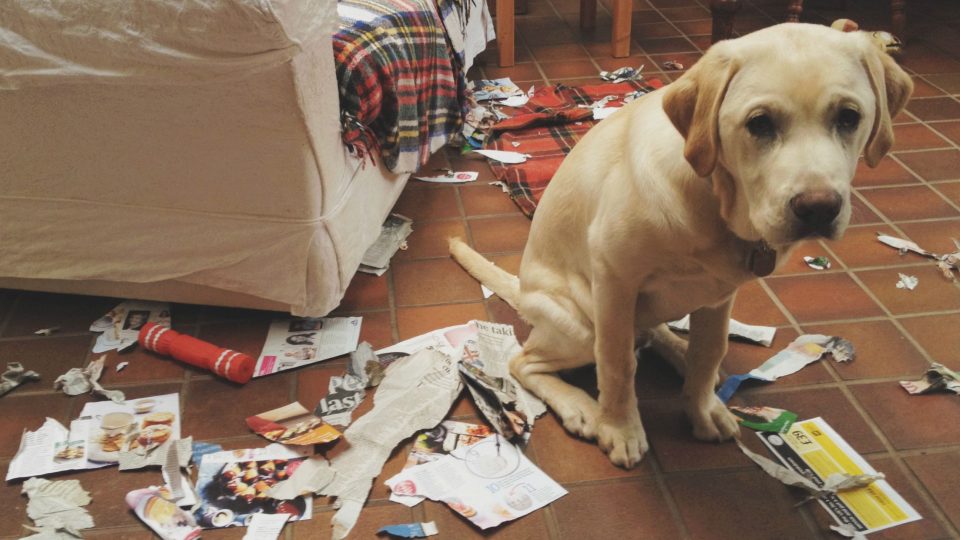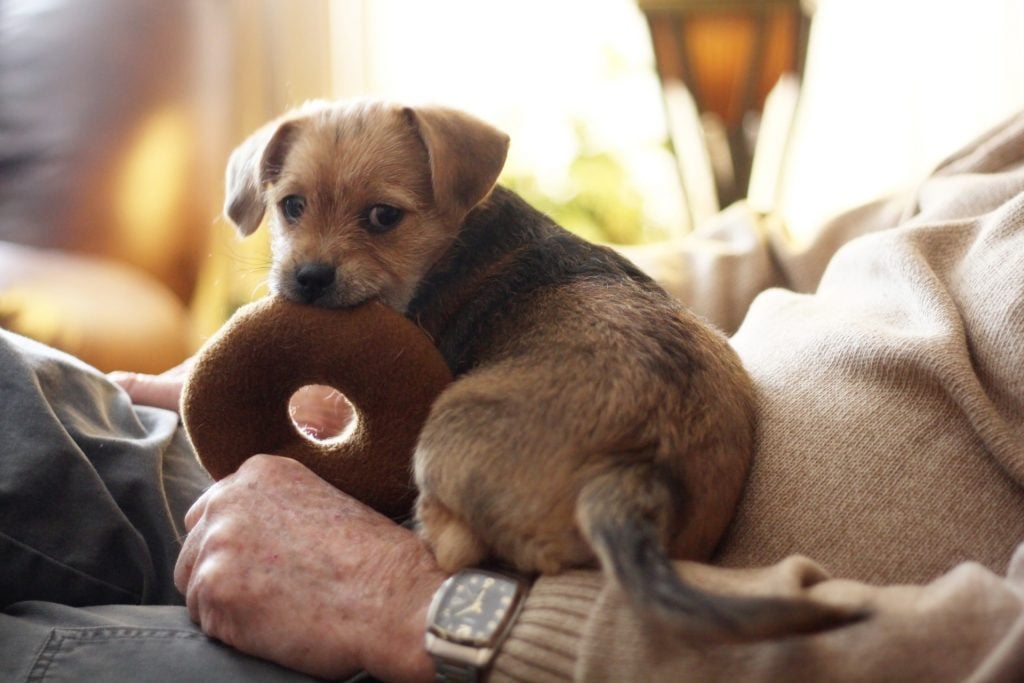Have you ever seen a newborn puppy? A tiny, three-days-out-of-the-womb puppy? If so, you may have noticed that the only way these little blind, deaf quasi-alien creatures can get a sense of the world around them is through their mouths, by suckling and licking their litter-mates.
The instinct to explore the world by mouth is one that puppies carry with them as they, and their teeth, grow. By around four weeks, the alien-rat-pup has evolved into having big eyes, floppy ears, silky fur and razor-sharp baby teeth. That instinct to put everything in their mouths, though? That sticks around for a while.
Naturally, you might worry about them chewing on your favourite shoes or handbag, but you can take measures to prevent it from happening. These tips that can help you protect your home and your pup at the same time.
Preventing puppy chewing
Puppies can’t tell the difference between a remote control, a shoe, and a toy; in their world, everything is a potential chew toy. They’ll investigate anything lying on the floor or coffee table because there’s no way for them to understand that some items are off-limits.
The best solution is not to try to change your puppy’s instinctual behaviour, but to change your own.
Put away your shoes, keep remote controls on high shelves, and use baby gates liberally to secure areas of the house that haven’t been puppy-proofed. Bonus: your house will be less cluttered … minus the puppy chew toys, treats, blankets, and fur, of course.
Supervise and redirect chewing
Unfortunately, not everything is portable enough to be kept out of the jaws of puppy-zilla. Some puppies are masters of chewing on furniture that you simply can’t protect.
The key to changing this behaviour is supervision and redirection.
If you know Puppy is irresistibly drawn to your dining room table legs, don’t allow them in the dining room without you watching. One of the ways dogs can learn how to change their behaviour is by being caught in the act and shown a more appropriate alternative.
If you catch your puppy chewing a piece of furniture, let them know “Whoops! That’s not the right thing to do!” and immediately approach them with a chew toy to draw their attention away.
If your puppy isn’t interested in the new option and goes back to the furniture, remove them from the location and offer them the chew toy again. With consistency over time, you will see a change.
Provide appropriate outlets for chewing
Since a puppy is going to chew, give them something appropriate to chew on. Rawhide is a no-no for puppies (and adult dogs, too) because it can too easily pose a choking hazard if your dog snaps off an edge. And if they do manage to swallow some of that broken-off rawhide without choking, your pup may have trouble digesting it.
Instead of rawhide, try offering your puppy a bully stick (sometimes called a pizzle stick) or pig’s ear. These products give your dog the same opportunity to chew but are fully digestible and less likely to have ragged edges if broken.
Always supervise young pups with these types of chewies. If your work schedule makes that tough—we get it!—enlist the help of a loving Rover.com dog sitter who offers dog boarding.
Stay calm
Puppy doesn’t know they’re doing anything wrong by following their instincts to put everything in their jaws. So if you chase and holler at them when they’ve gotten hold of something “illegal,” they’re likely to think that you’re either joining in the fun or have turned into a scary monster.
Instead of chasing your dog, try trading them a toy for the object. If you need stronger ammo, trade your pup for a piece of cheese or hot dog, or throw several pieces on the ground and remove the object when they’re otherwise occupied.
Through their puppyhood and well into adolescence, your puppy will chew. That’s a fact. But with patience, supervision, redirection, and the right chewing outlets, you will get through this phase!
And thankfully, you’ll get plenty of puppy kisses along the way.





